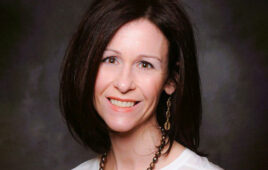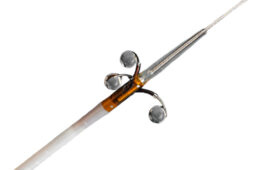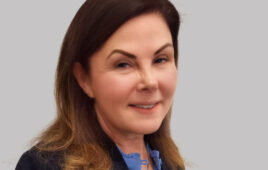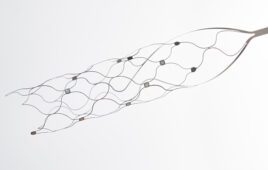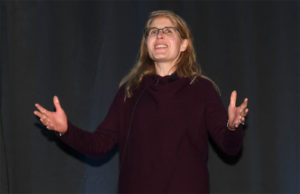
Naomi Murray, Stryker director of advanced operations, sharing with her team her enthusiasm and excitement for what is to come in the world of additive.
After 18 years in the industry, Murray says women still need to ruffle some feathers.
Math and science fascinated Naomi Murray from a young age. Around her junior year in high school, she began to notice that she was one of — if not the only — girl in her math classes.
The same was true in some college engineering courses and ultimately, in the workforce. “I was outnumbered,” Murray told Medical Design & Outsourcing in an interview. “You begin to get used to being in a more male-dominated industry.”
Murray earned undergraduate and doctoral degrees in engineering and materials science. Now the director of additive technology at Stryker (NYSE:SYK), Murray is helping to bring the company forward in additive manufacturing, a field that, about 20 years ago, was practically brand new.
She started working on additive technologies in 2003 as a research engineer, beginning with porous structures. By 2007, the team had its first prototype equipment and in 2011, Stryker had installed the first production equipment at one of its plants. At that point, the team focused on the Triathlon Tritanium tibial baseplate, which was first implanted in 2013 and launched in 2014.
Murray is excited by what she’s seen in the additive field and by what may come. She believes 3D printing methods offer design freedom, particularly with porous metal technology.
“As the additive industry continues to evolve, its customers are going to demand new capabilities that they don’t have today,” Murray said. “I think we’ve just scratched the surface on things like the combination of additive and other technology, such as Stryker’s robot surgery technology.”
Murray believes additive manufacturing technology must keep evolving in order to continue its rapid growth. For example, she said, as-printed surface finish continues to be a challenge for metal additive technology. The additive industry must improve surface finish of as-built products for wider-scale adoption and long-term sustained rapid growth, she said.
While she works to move the Kalamazoo, Mich.-based orthopedics company forward in the additive space, Murray is also aware of the role of women in positions like hers to make changes in other ways.
In many situations, she was one of very few women in the room or on a team at Stryker. Take, for example, her introduction to the company.
When she began working there as a research engineer in 2002, Murray found her team to be very welcoming. Later on, she learned that, when planning for her arrival, the team realized that she would be the only woman on the team and that its members had become more aware of their day-to-day behavior.
“When I was first told that, I thought it was strange that a woman joining the team caused a change in behavior,” Murray said.
Murray came to feel that part of her responsibility as a woman in engineering is to “help drive change, to make women on engineering teams normal and to support other women across the organization who might feel alone or underrepresented.”
Stryker has done a good job of helping drive that mission forward, according to Murray. The company has made promoting diversity and inclusion a priority, with a number of employee resource groups available to do so. They include the Stryker Women’s Network (SWN), Stryker’s Allies for Equality (SAFE), Women in Science and Engineering (WISE), Stryker’s African American Network (SAAN), Hispanic/Latino network (SOMOS), Stryker’s Emerging Professionals (SEP) and Stryker’s Veterans Association (SVA) available to its employees.
“Early on, Stryker recognized that having diverse voices within teams within the company and championing all sorts of diverse voices is important,” Murray said. “I feel like, at Stryker, there’s a lot of openness and opportunity and many women to look up to.”
Murray also believes there is still room to improve diversity and the presence of women in medtech, especially promoting women in science and engineering and into C-suite positions. She advises women entering the industry, whether they’re looking at being an engineer or an executive, to persevere and to ruffle a few feathers.
“It’s OK if things are different or a little bit difficult compared to what you think they should be,” Murray said. “You don’t have to solve the problem, whether it’s technical or organizational, alone or all at once. One of the most important things we can do is take the first step and make sure we get others’ opinions, pull in that diversity and be bold.”

